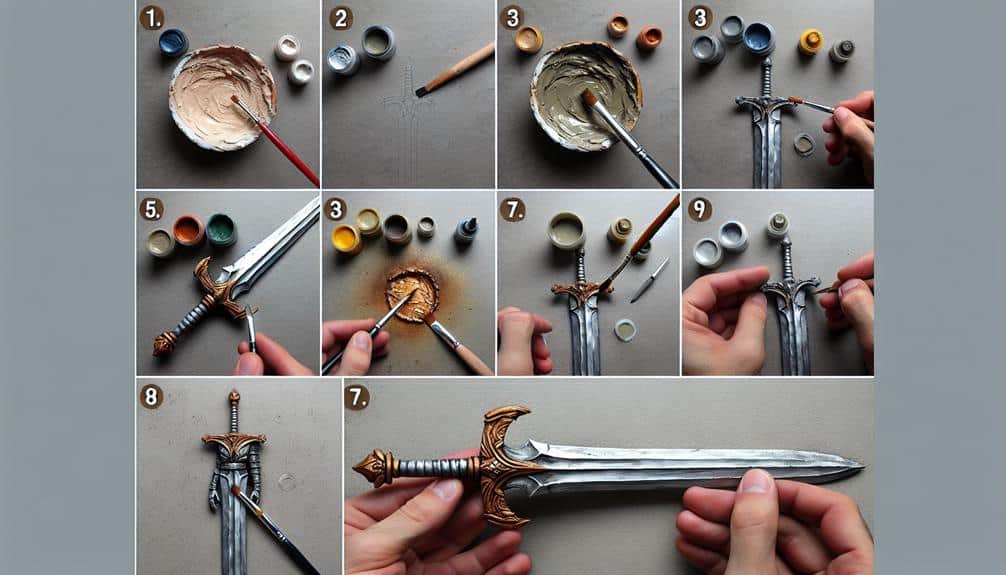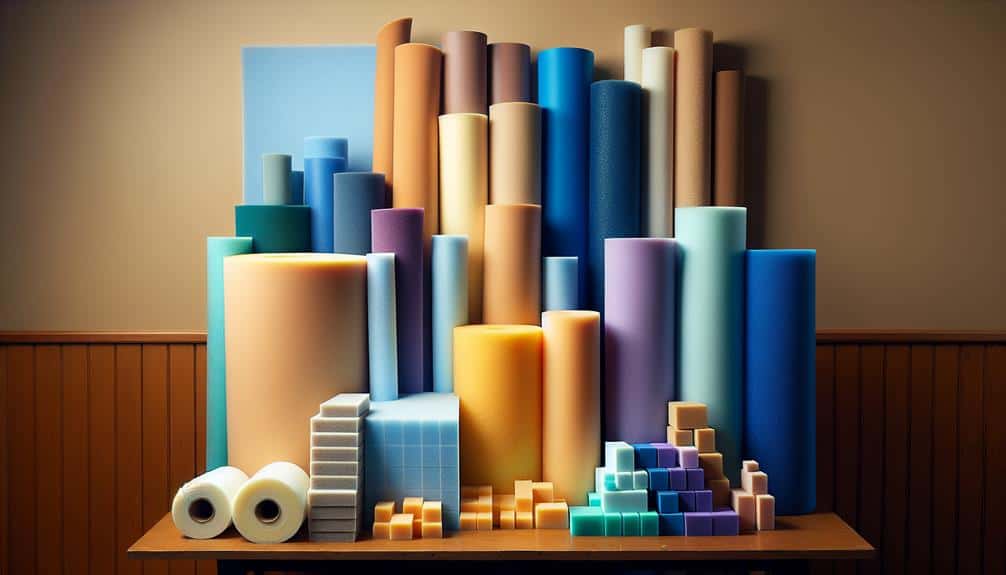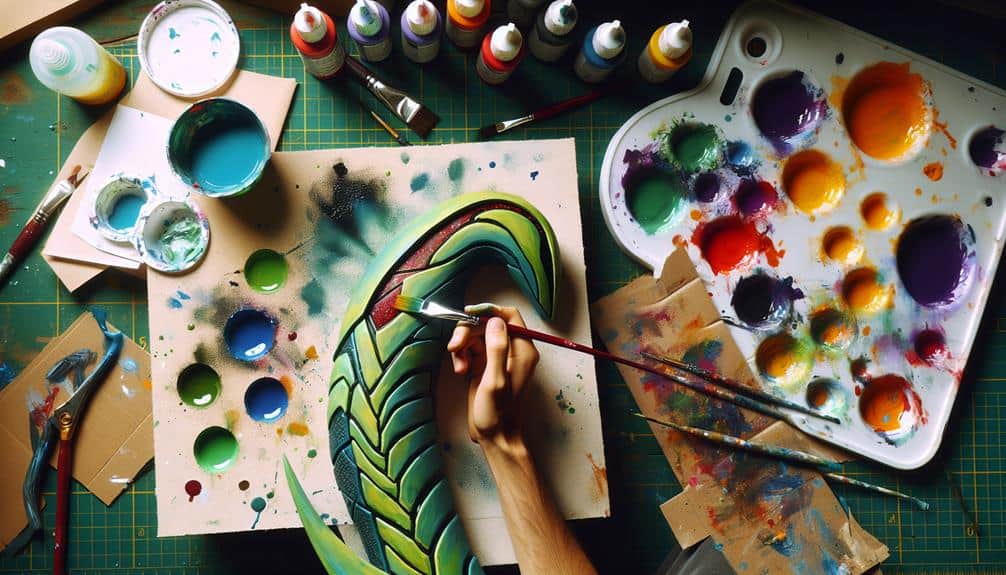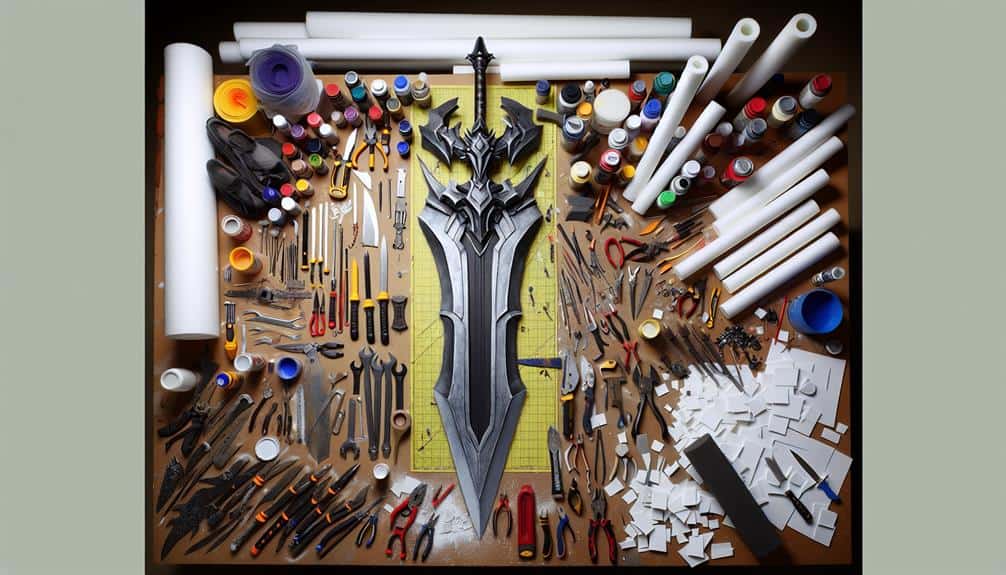Have you ever wondered how to make props look convincingly like real metal?
From weathering techniques that add depth to painting methods for achieving a metallic sheen, there are various ways to replicate metal effects on props.
But what about aging and distressing prop surfaces to give them an authentic worn look?
And don't forget about faux metal texture applications or the importance of polishing and sealing for added realism.
These techniques can truly transform ordinary props into metallic marvels, mesmerizing viewers and enhancing the overall production quality.
Key Takeaways
- Use rust-colored base coat and layer rust shades for realistic corrosion effects.
- Experiment with metallic patinas and layering for aged and weathered appearances.
- Apply green and blue patina solutions strategically for authentic verdigris patterns.
- Buff, polish, and seal props for a glossy, durable finish resembling real metal.
Weathering Techniques for Metal Props
To achieve realistic metal weathering effects on props, consider utilizing a combination of painting techniques and specialized tools. When aiming for rust effects, start by applying a base coat of rust-colored paint to your prop. Once dry, use a sponge or brush to dab on layers of different shades of rust, focusing on areas that would naturally corrode over time. To enhance the weathered look, lightly sand the edges and corners to reveal the base metal underneath.
For a patina application, begin by coating your prop with a base color that resembles aged copper or bronze. Next, mix water-based green or blue patina solutions and apply them strategically to mimic the uneven oxidation seen on weathered metals. Allow the patina to react with the base coat, creating authentic-looking verdigris patterns. For a more textured appearance, consider dabbing on a mixture of baking soda and water before the patina fully dries.
Painting Methods for Metallic Finish
For achieving a striking metallic finish on your props, explore innovative painting methods that bring out the desired sheen and texture. When aiming for a realistic metal look, consider the following techniques:
- Dry Brushing: Utilize this method by applying a small amount of metallic paint on a dry brush and lightly brushing it over the raised areas of your prop. This technique adds highlights and depth to the surface, mimicking the natural wear and shine of metal.
- Metallic Patinas: Experiment with metallic patinas to create an aged and weathered appearance on your props. These specialty finishes can simulate the look of copper, bronze, or other metals, enhancing the overall authenticity of your prop.
- Layering Metallic Paints: Create depth and richness by layering different shades of metallic paint. Start with a base coat of a darker metallic shade and gradually add lighter tones to highlight specific areas.
- Sponge Application: Achieve a textured metallic finish by using a sponge to dab on metallic paint. This technique can mimic the uneven and aged look of metal surfaces.
- Combining Techniques: Combine various painting methods such as dry brushing, metallic patinas, and layering for a multidimensional and realistic metallic finish on your props. Experiment with different combinations to achieve the desired effect.
Aging and Distressing Prop Surfaces
When aiming to achieve an authentic aged look on prop surfaces, incorporating distressing techniques enhances the overall realism and character of your props. To create a convincing rust effect, start by applying a base coat of orange-brown paint. Once dry, dab on spots of darker brown and black, blending them outwards to mimic the look of real rust. For a more advanced rust effect, sprinkle salt on the wet paint and let it dry before brushing it off. This technique leaves behind a textured, rusted appearance.
In addition to rust effects, applying a patina can add depth and history to your props. To achieve this, use a mixture of green and blue patina solutions, applying them unevenly and allowing them to pool in crevices. Use a spray bottle filled with vinegar to enhance the patina effect by creating a weathered look.
Faux Metal Texture Applications
Discover the art of creating engaging faux metal textures that will bring your props to life with an authentic and visually striking appearance. When aiming to achieve a realistic metal effect, consider the following techniques:
- Rust Effect: Utilize specialized paints or rust activators to create a weathered and aged look on your props, adding depth and character to the surface.
- Patina Application: Experiment with various patina solutions to mimic the natural oxidation process, resulting in beautiful green or blue hues that imitate aged copper or bronze.
- Metallic Sheen: Incorporate metallic paints or powders to achieve a shiny finish, enhancing the illusion of real metal on your props.
- Faux Finishes: Explore different faux finishing techniques such as sponging, stippling, or ragging to create texture and depth, replicating the look of various metal surfaces.
- Layering Techniques: Build up layers of different colors and textures to mimic the complexity of real metal, achieving a more convincing and intricate faux metal effect.
Polishing and Sealing for Realism
To enhance the authenticity of your faux metal props, guarantee a realistic finish by meticulously polishing and sealing the surfaces for a professional and long-lasting effect. Start by buffing the surface of your prop to create a smooth and shining finish that mimics real metal. Use a soft cloth or a buffing wheel with a polishing compound to achieve a glossy look. Pay attention to details, as important buffing can undermine the realism you're working for.
After buffing, sealing the prop is essential to protect the finish and enhance durability. Varnishing is a common technique used to seal faux metal props. Choose a varnish that's suitable for the material of your prop and apply it evenly in thin layers. The varnish not only protects the surface but also adds depth and richness to the metallic appearance.
Frequently Asked Questions
Can Metal Effects Be Replicated on Props Made of Non-Metal Materials?
To replicate metal effects on non-metal props, consider material limitations. Get creative with alternatives such as textured paints or metallic foils. Opt for cost-effective DIY solutions like using metallic spray paints and weathering techniques for realistic results.
Are There Any Safety Concerns When Using Certain Techniques to Replicate Metal Effects on Props?
To guarantee safety when replicating metal effects on props, always follow safety precautions and consider ventilation requirements. Proper ventilation reduces exposure to harmful fumes. Safety gear like gloves and goggles should be worn.
How Long Do the Different Techniques for Replicating Metal Effects on Props Typically Last Before Needing to Be Redone?
To guarantee your props maintain their shine, consider the longevity of metal effects techniques. Some may necessitate frequent upkeep, while others offer more durability. Be cautious of maintenance needs to keep your props looking polished.
Can the Same Techniques Be Used to Replicate Different Types of Metal Finishes, Such as Copper or Bronze?
To replicate different metal finishes like copper patina or bronze aging on props, explore various techniques suited for metal texture. Consider the prop material for best results, ensuring the chosen method aligns with the desired metal effect.
Are There Any Specific Tools or Equipment Required for Achieving Realistic Metal Effects on Props?
To achieve stunning metal effects on props, you must be equipped with the right tools and techniques. Specialized tools like airbrushes and metallic paints are essential for creating realistic finishes that will dazzle your audience.



